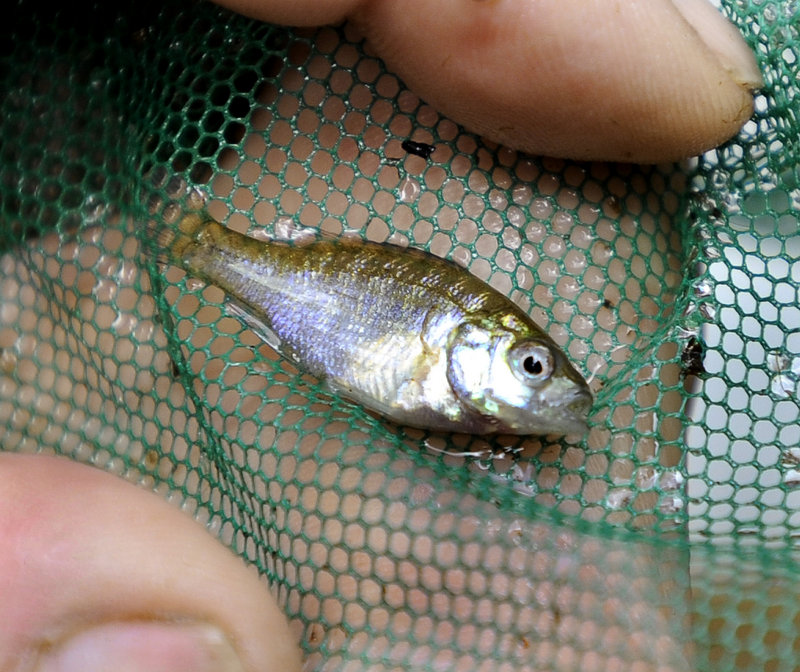WISCASSET — All of the permits are in hand, contractors’ bids will soon be in and, within a few weeks, the Lower Montsweag Brook dam will start coming down.
Built in 1968, the dam created a mile-long impoundment that served as a backup freshwater supply for the Maine Yankee nuclear power plant.
In 2008, the Chewonki Foundation became the dam’s owner in a settlement between state agencies and the owners of the decommissioned plant to compensate for groundwater contamination from Maine Yankee.
The Chewonki Foundation is now on the verge of taking out the 200-foot-long dam, which will open up the brook to fish that migrate between fresh and salt waters.
Eels now use a rock ledge along one side of the 35-foot-tall dam to make it over, but the dam blocks other species, such as sea-run brook trout.
“We’d like to see what nature does when the obstacles are removed from the environment,” said Don Hudson, the foundation’s past president.
A long-term monitoring program that will involve Chewonki volunteers and Wiscasset students is part of the plan. They will collect information about water quality, fish passage and other factors related to the dam’s removal, all of which will go onto a website.
Hudson noted that the watershed is small — only about 10.5 square miles — but said the $900,000 project has great potential.
The foundation used the money from Maine Yankee to leverage funds from other sources, including the federal stimulus package, other conservation organizations and government agencies.
The dam is about 3 miles downstream from a smaller dam that Chewonki hopes to acquire in the coming months and remove in the next couple of years. Central Maine Power Co. plans to give the foundation that dam, along with 30 acres for conservation.
The foundation’s work around the lower dam is already visible. The water was drawn down earlier this summer, turning the pond behind the dam into a stream once again. The disappearance of the water exposed mud and stumps that had been under water since the dam was built. Grasses are now growing along the slopes going down to the water, which have been seeded.
In two or three years, Hudson expects to see a greener valley with birch and maple saplings and more diverse vegetation. In 20 years, he expects the area will look like a thicket.
Bids for the dam removal are due Tuesday and a contractor will likely be chosen by the end of the week, said Dan Creek, the project manager.
early September, heavy machinery should be chipping away at the dam. The removal is expected to be complete in the fall, he said.
Parts of the dam below ground will remain, but they aren’t expected to be visible or affect the channel.
Landis Hudson, executive director of Maine Rivers, applauded the progress of the Lower Montsweag dam project.
“We have hundreds and hundreds of obsolete, crumbling dams in Maine that should be removed that aren’t,” she said.
But not everyone is pleased about the dam’s fate.
Doris Newman is sorry that the pond near her home is gone, along with the fishing spot that her partner, Reginald Dunkling, has long enjoyed with his sons and grandsons.
She had hoped to see a fish ladder — an option the foundation ruled out after a feasibility study — rather than removal of the pond, which was stocked with fish.
“We’re just going to have to live with it, like it or not,” she said.
Don Hudson acknowledged that losses will come with the dam’s removal.
But in his mind, it was more important to restore a natural condition than to maintain habitat for introduced species.
Chris Cossette, superintendent of the Wiscasset Water District, said he was concerned about the dam’s removal because the impoundment could have served as an emergency source of water.
Cossette said the district asked for a study stemming from the Maine Yankee settlement to identify a secondary groundwater source.
He would like the state Department of Environmental Protection to revisit the study.
Staff Writer Ann S. Kim can be contacted at 791-6383 or at:
akim@pressherald.com
Send questions/comments to the editors.




